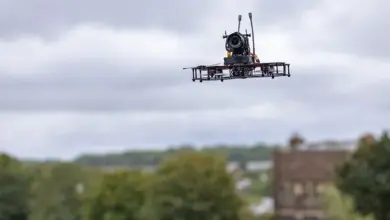
Introduction
The digital age has seen numerous technological advancements, but few have the potential to reshape industries and daily life quite like 5G. Fifth-generation (5G) wireless technology represents a transformative leap in connectivity. It offers higher speeds, lower latency, and the capacity to handle significantly more devices compared to its predecessors, such as 4G LTE. With 5G, new opportunities for innovation, growth, and efficiency emerge across sectors like healthcare, transportation, education, and entertainment. This article delves into the future of 5G, exploring its potential to revolutionize communication, the challenges it faces, and its profound impact on global connectivity.
What is 5G?
5G is the latest generation of mobile networks, designed to increase the speed and responsiveness of wireless communication systems. Its performance capabilities far exceed those of earlier technologies. At its core, 5G promises:
- Faster Data Speeds: 5G is expected to provide speeds up to 100 times faster than 4G, with the potential to reach up to 10 Gbps (gigabits per second).
- Low Latency: The time it takes for data to travel from one point to another, known as latency, will be significantly reduced with 5G. This low latency is essential for real-time applications like autonomous vehicles, online gaming, and telemedicine.
- Massive Device Connectivity: 5G networks can support a massive number of devices—up to one million devices per square kilometer—making it ideal for IoT (Internet of Things) applications.
These three factors combine to create a network that is not just an upgrade, but a fundamental shift in how devices communicate and operate within our world.
The Key Benefits of 5G Technology
1. Enabling the Internet of Things (IoT)
One of the most promising areas that 5G will revolutionize is the Internet of Things (IoT). The IoT ecosystem includes billions of interconnected devices, from smart homes to wearable technology and industrial machinery. These devices require constant communication, often with small data exchanges, and 5G’s ability to handle a vast number of simultaneous connections makes it a perfect fit for this ecosystem. With 5G, smart cities, smart grids, and autonomous infrastructure will become more prevalent, as sensors and devices can relay data in real time to improve efficiency, safety, and convenience.
2. Transforming Healthcare with 5G
Healthcare is another sector where 5G connectivity is expected to drive major advancements. Telemedicine, which gained prominence during the COVID-19 pandemic, will evolve with 5G, allowing doctors to conduct remote consultations with higher-quality video and real-time diagnostics. Moreover, 5G enables the use of remote surgeries, where doctors can perform operations on patients thousands of miles away using robotic tools. The low latency and ultra-reliable nature of 5G mean that medical professionals can deliver life-saving interventions without delays or errors caused by network lag.
3. Autonomous Vehicles and Smart Transportation
The development of autonomous vehicles relies heavily on fast, reliable, and low-latency networks. 5G will be a driving force behind the deployment of self-driving cars, as vehicles will be able to communicate with each other and surrounding infrastructure instantly. This real-time communication is crucial for avoiding accidents, optimizing traffic flow, and improving the overall safety of transportation systems. Additionally, smart transportation solutions such as real-time navigation updates, dynamic traffic management, and connected public transportation systems will benefit from 5G’s capabilities.
4. Enhanced Virtual and Augmented Reality (VR/AR)
The entertainment and gaming industries are poised to benefit significantly from 5G connectivity, particularly through advancements in Virtual Reality (VR) and Augmented Reality (AR). These immersive technologies demand high data rates and low latency to deliver seamless experiences. 5G will enable AR and VR applications to expand beyond gaming, finding use cases in fields like education, where students can engage in interactive lessons, and in real estate, where potential buyers can take virtual tours of properties without leaving their homes.
5. Advancements in Industrial Automation
The industrial sector will undergo substantial changes with 5G’s introduction. Smart factories, powered by connected machines and systems, will be able to automate processes at a scale never before seen. Real-time data analytics, predictive maintenance, and machine learning algorithms will make manufacturing more efficient and cost-effective. With 5G, factories can respond to changes in demand almost instantaneously, reducing downtime and waste. This advancement aligns with the Industry 4.0 movement, where the integration of digital technologies drives the next wave of industrial growth.
The Challenges of 5G Implementation
While the future of 5G holds great promise, its deployment is not without challenges. Several factors need to be addressed to fully realize the potential of this technology:
1. Infrastructure Requirements
One of the main hurdles for 5G adoption is the extensive infrastructure required. 5G networks rely on higher frequency bands (millimeter waves), which have shorter ranges and require more base stations than 4G. This necessitates the installation of many small cell towers in cities and rural areas alike. The cost and logistical challenges of building this infrastructure can slow the rollout, particularly in remote or underdeveloped regions.
2. Security Concerns
With increased connectivity comes heightened security risks. The massive number of devices connected to 5G networks increases the potential entry points for cyberattacks. Moreover, the use of 5G in critical sectors like healthcare, transportation, and defense makes the stakes even higher. Ensuring the security and privacy of 5G networks will be a key priority, requiring robust encryption protocols, enhanced authentication methods, and stronger network monitoring systems.
3. Spectrum Allocation
5G operates on a wide range of frequencies, from sub-1 GHz bands to millimeter waves. However, the allocation of these frequency bands is tightly regulated by governments. Finding the right balance between spectrum availability and usage is essential for ensuring that 5G networks can meet demand without interference from other wireless services. The competition for spectrum between telecommunications providers, governments, and other industries could slow the adoption of 5G if not handled efficiently.
4. Energy Consumption
While 5G offers significant improvements in performance, it also has the potential to increase energy consumption due to the need for more base stations and processing power. This could lead to higher operational costs for service providers and a greater environmental impact. Innovations in energy-efficient network technologies will be crucial to making 5G sustainable in the long run.
The Global Impact of 5G Connectivity
As 5G continues to roll out globally, its impact on different regions and industries will vary. Developed nations with strong telecommunications infrastructure are leading the charge in 5G adoption, with countries like the United States, South Korea, and China already offering widespread 5G coverage. In these regions, we can expect to see rapid advancements in smart cities, autonomous vehicles, and IoT-driven industries.
In contrast, developing nations face more significant challenges in implementing 5G due to infrastructure gaps, high costs, and regulatory hurdles. However, 5G has the potential to bridge the digital divide by bringing faster internet access to rural and underserved areas, which could boost education, healthcare, and economic development in these regions.




